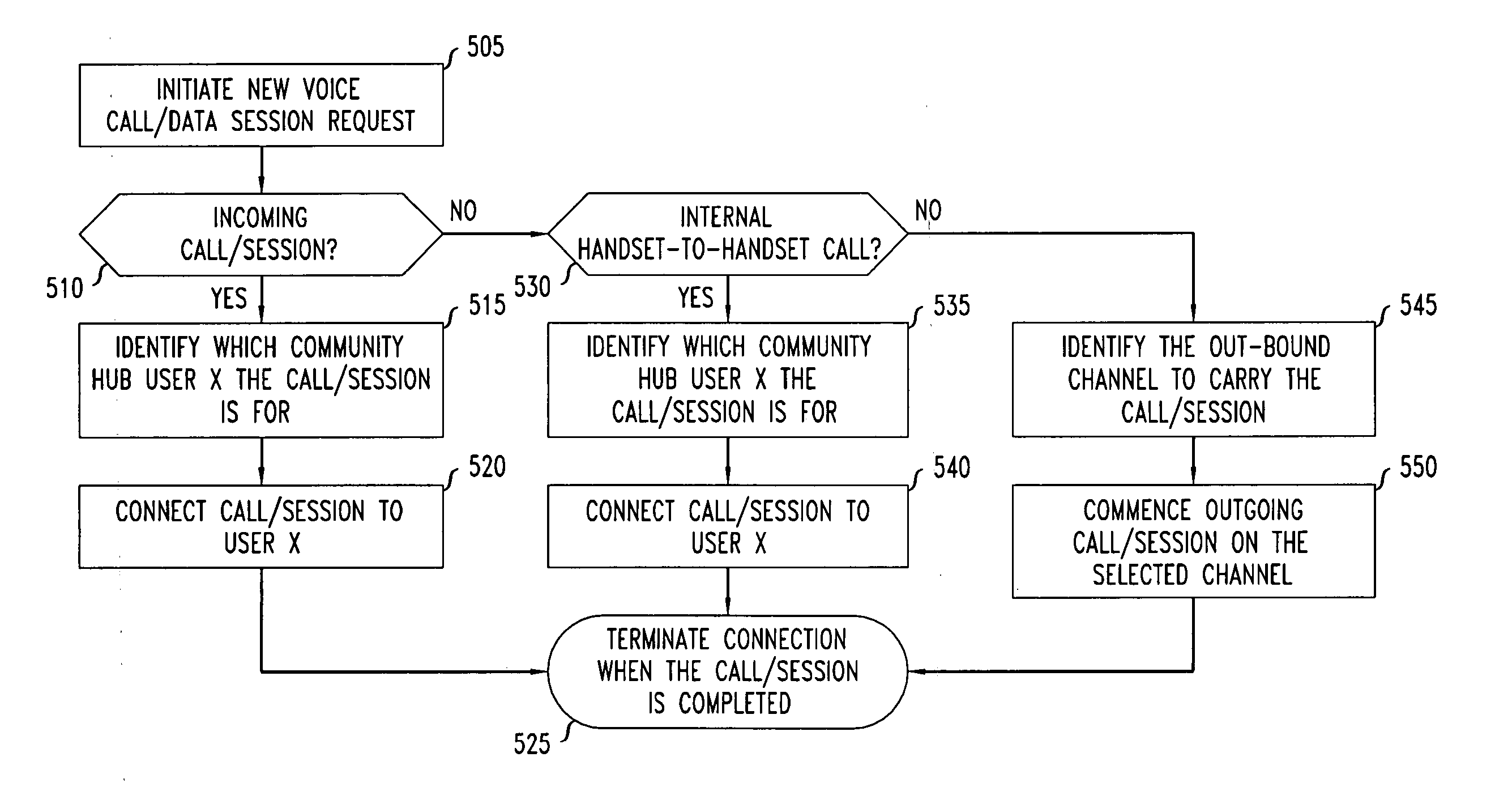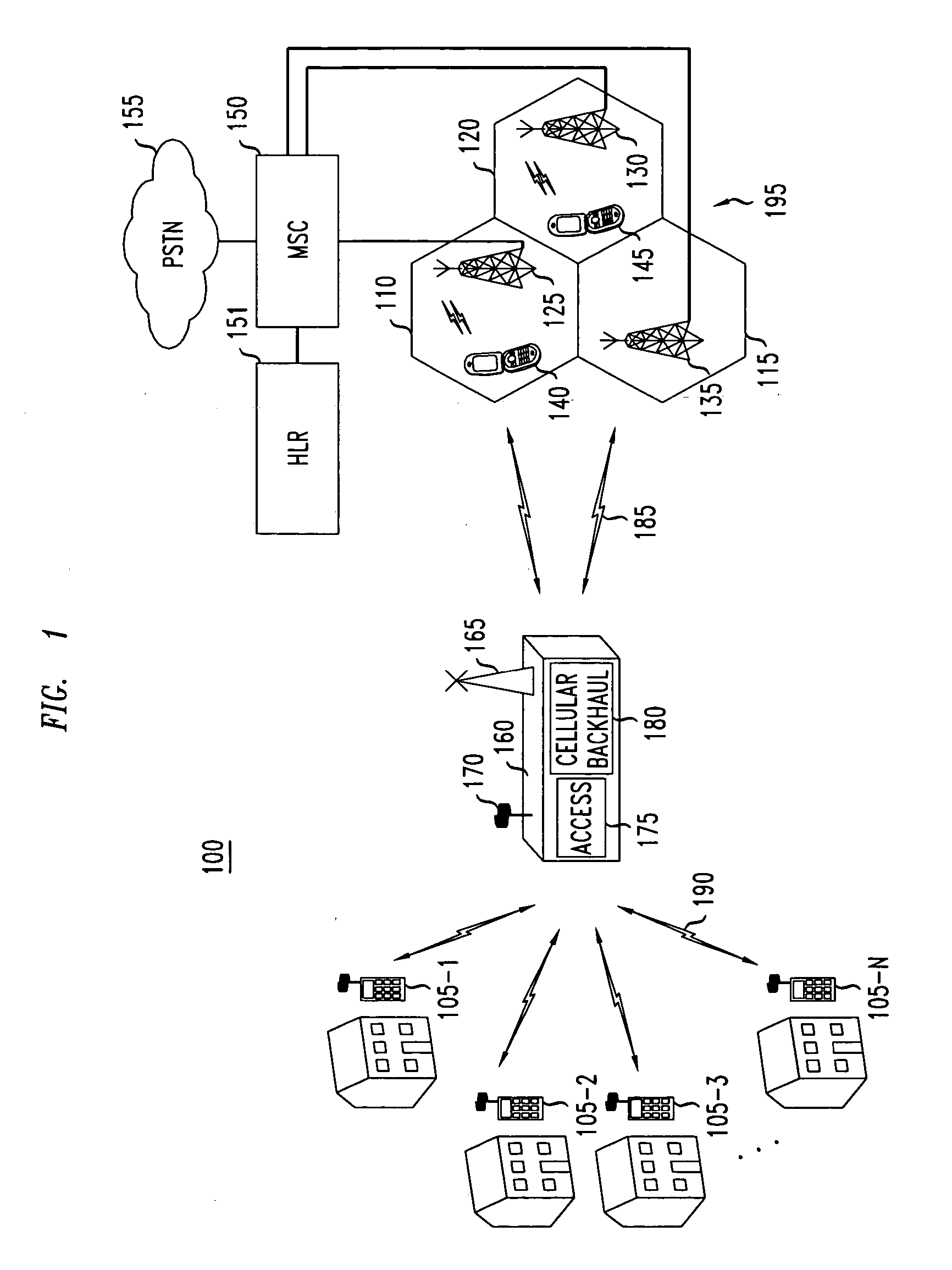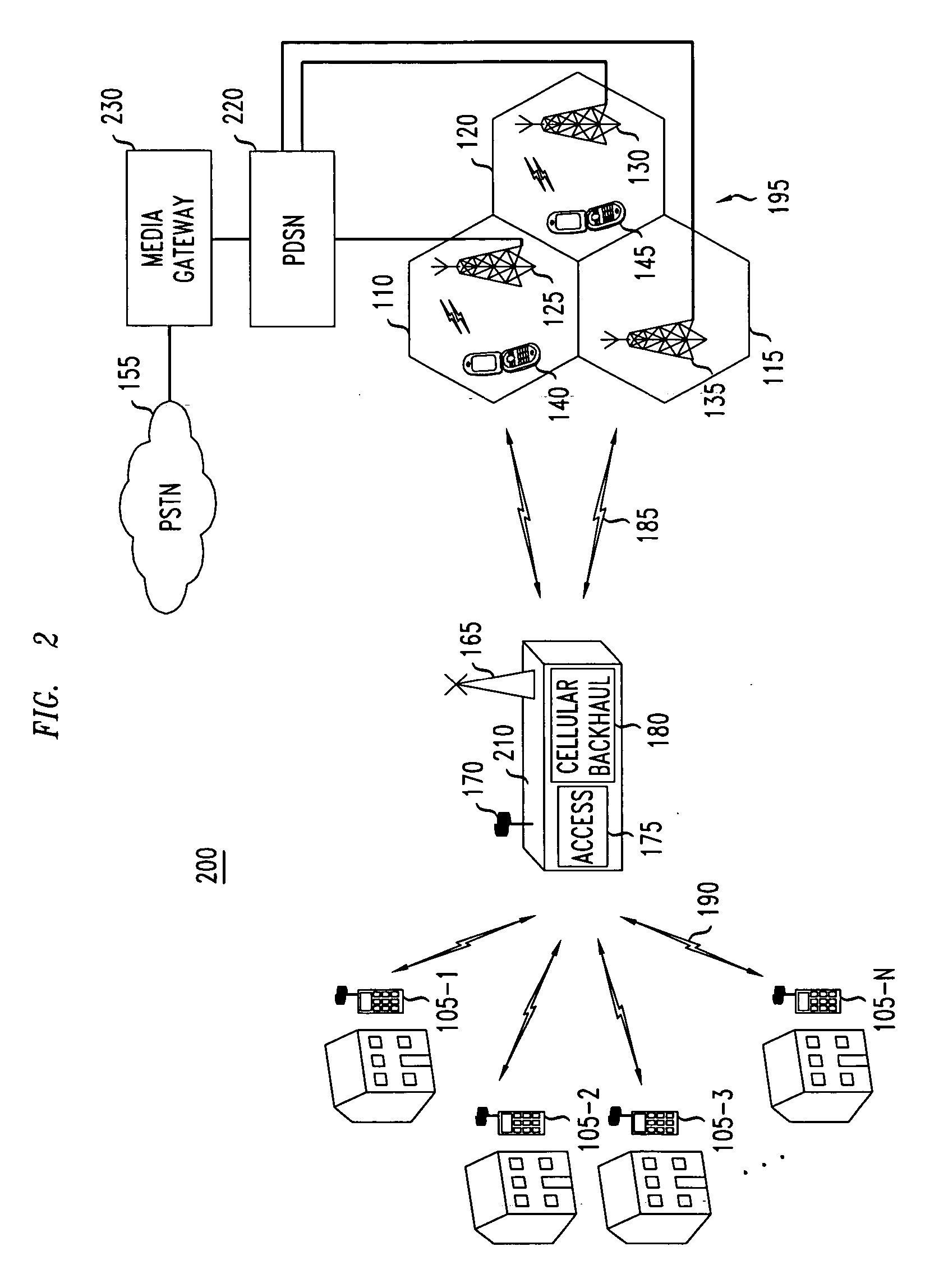Delivery of communications services in developing regions
- Summary
- Abstract
- Description
- Claims
- Application Information
AI Technical Summary
Benefits of technology
Problems solved by technology
Method used
Image
Examples
Embodiment Construction
[0025]FIG. 1 shows an illustrative embodiment of a communications system configured, for voice transport, in accordance with the principles of the invention. More particularly, FIG. 1 illustrates wireless communications system 195 (illustratively, a CDMA system) that complies, illustratively, with the well-known CDMA 2000 standard. As will be appreciated, the operation of wireless networks is in large part defined by industry standards. These standards specify the air interface specification that allows a mobile terminal (see, for example, FIG. 1, mobile terminal 140 and 145, respectively) to communicate with a base station (see, for example, FIG. 1, base station 125 and 130, respectively). The air interface specification typically includes a set of air interface channels, channel encoding rules and signaling messages to allow the mobile terminal to communicate with the base station. As such, it will be understood, that while the various embodiments of the invention described herein...
PUM
 Login to View More
Login to View More Abstract
Description
Claims
Application Information
 Login to View More
Login to View More - R&D
- Intellectual Property
- Life Sciences
- Materials
- Tech Scout
- Unparalleled Data Quality
- Higher Quality Content
- 60% Fewer Hallucinations
Browse by: Latest US Patents, China's latest patents, Technical Efficacy Thesaurus, Application Domain, Technology Topic, Popular Technical Reports.
© 2025 PatSnap. All rights reserved.Legal|Privacy policy|Modern Slavery Act Transparency Statement|Sitemap|About US| Contact US: help@patsnap.com



